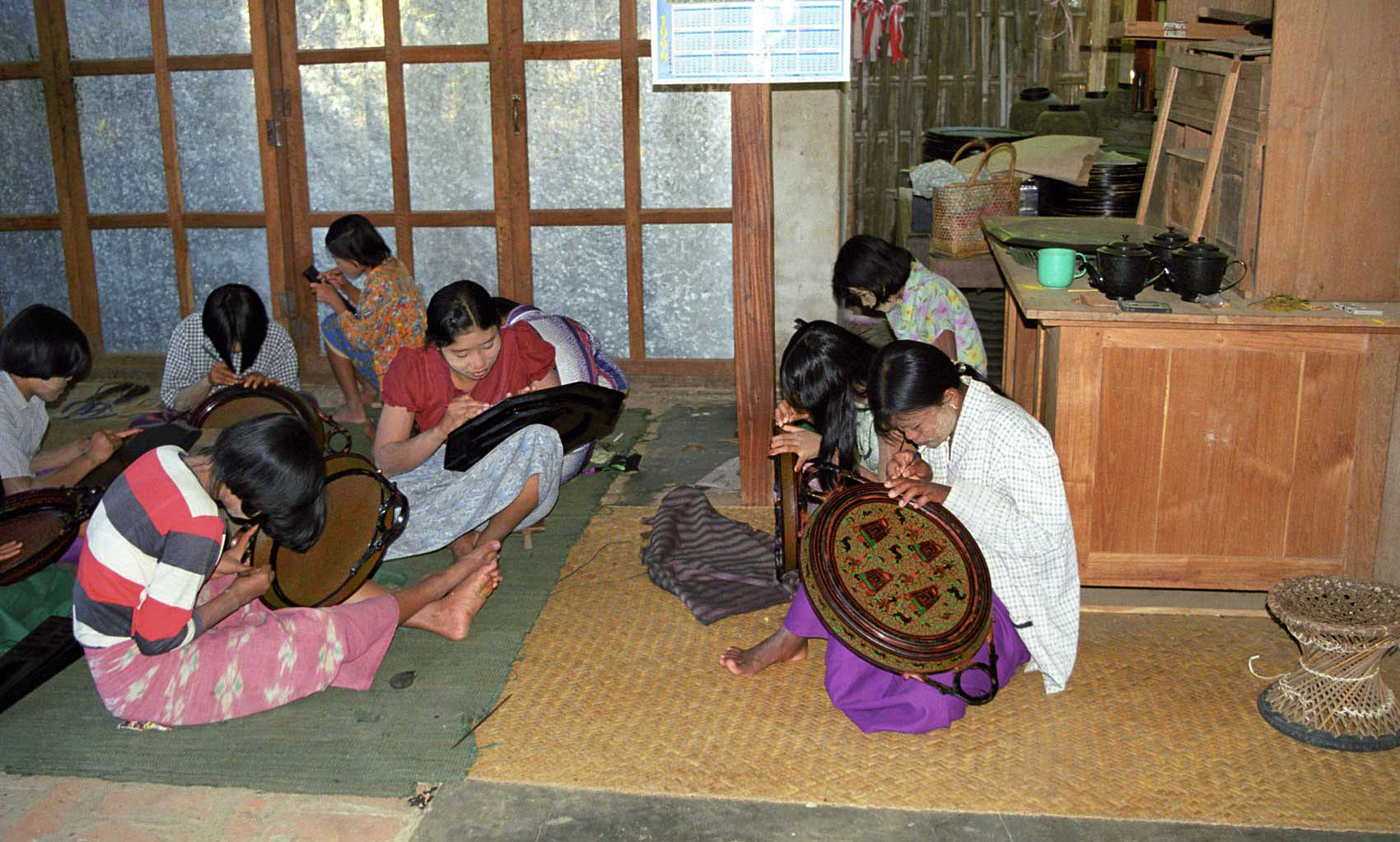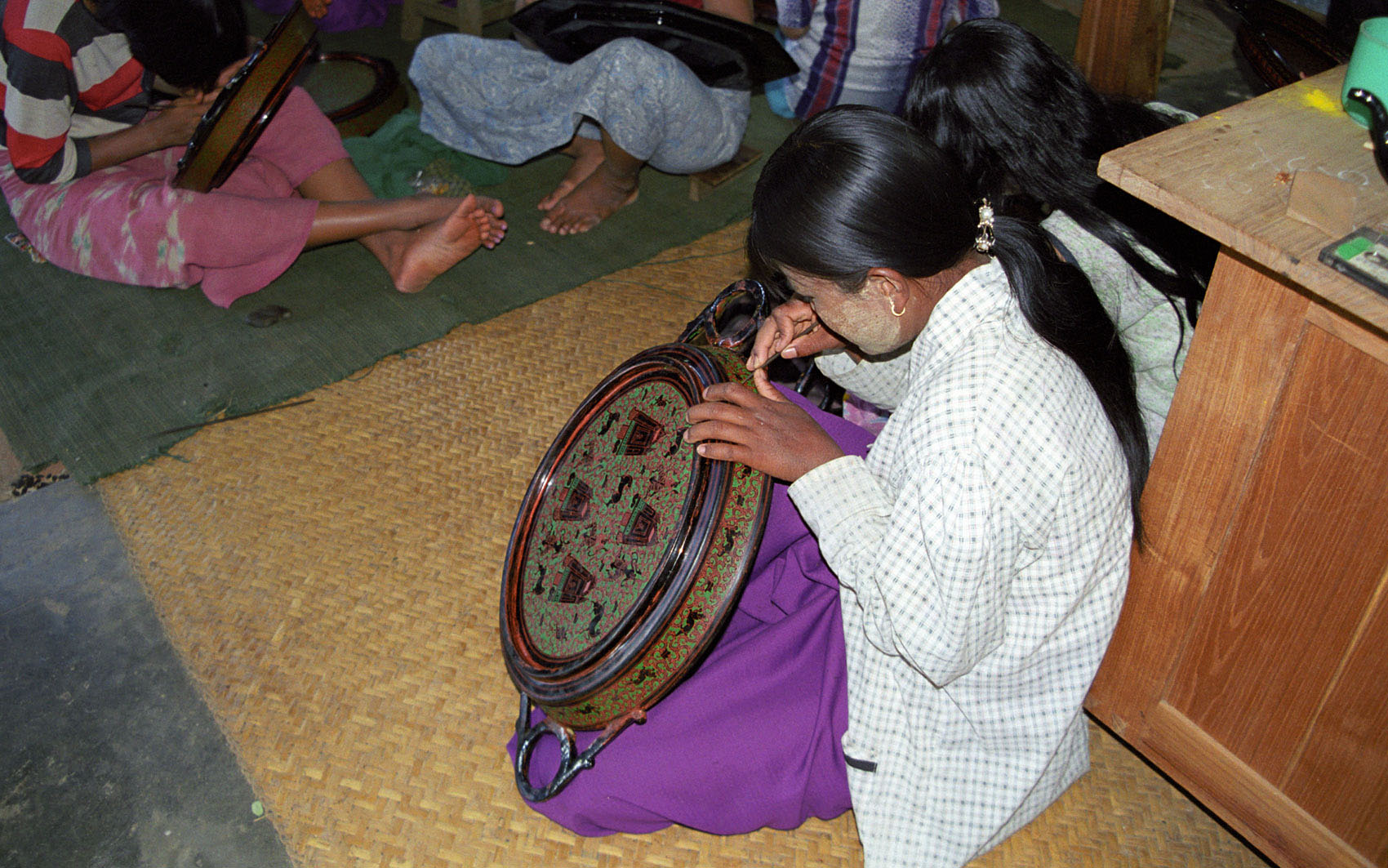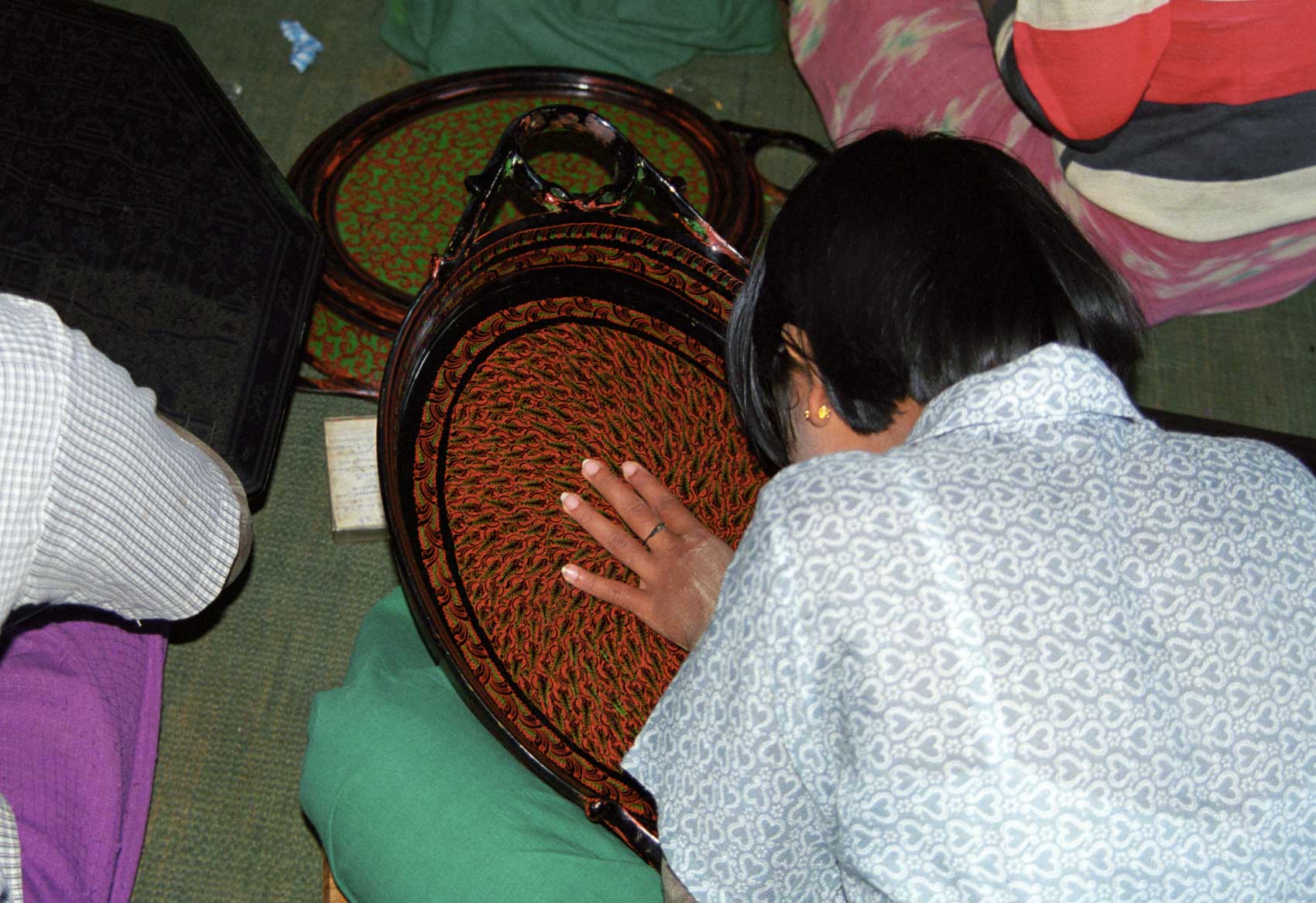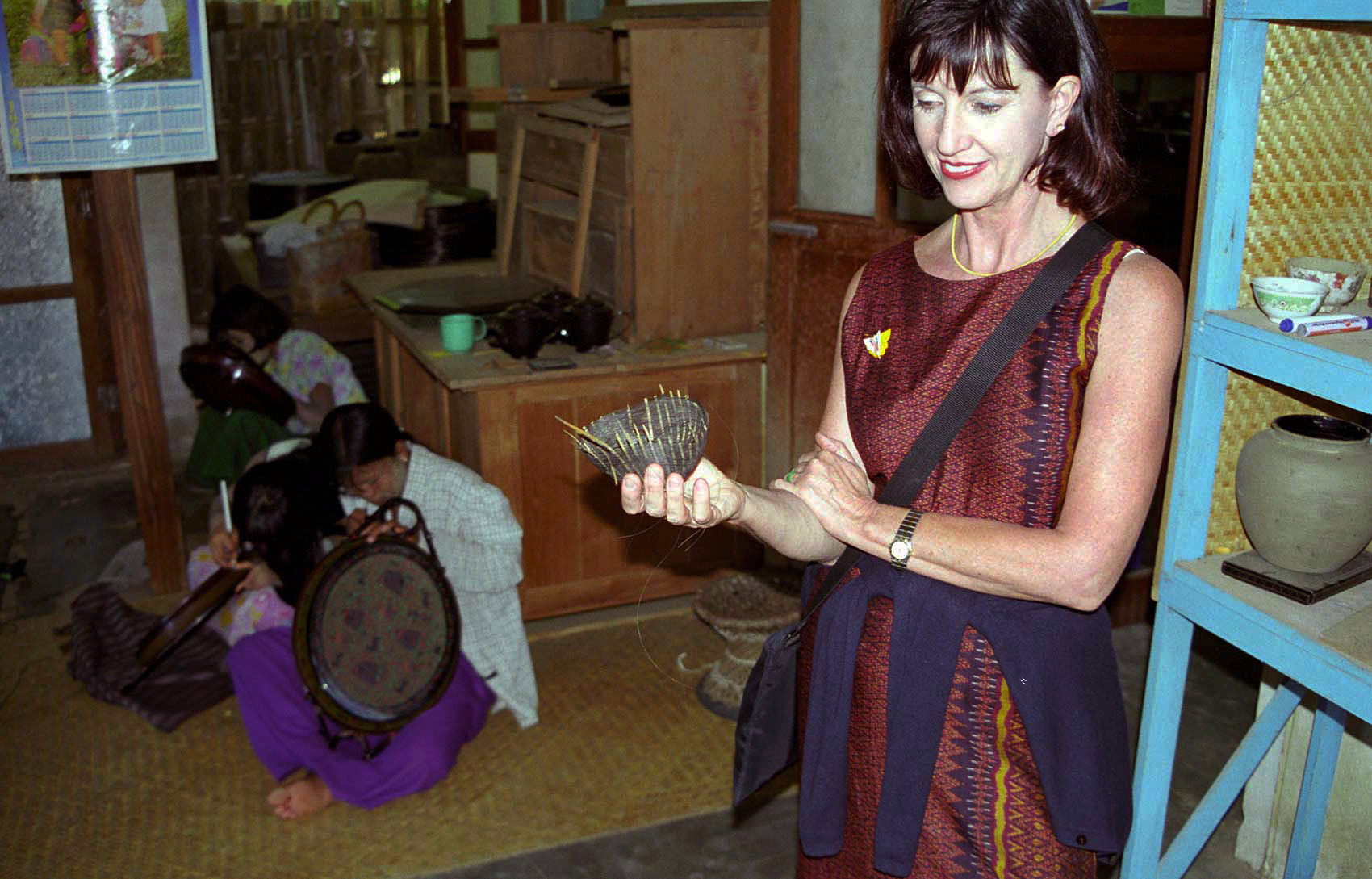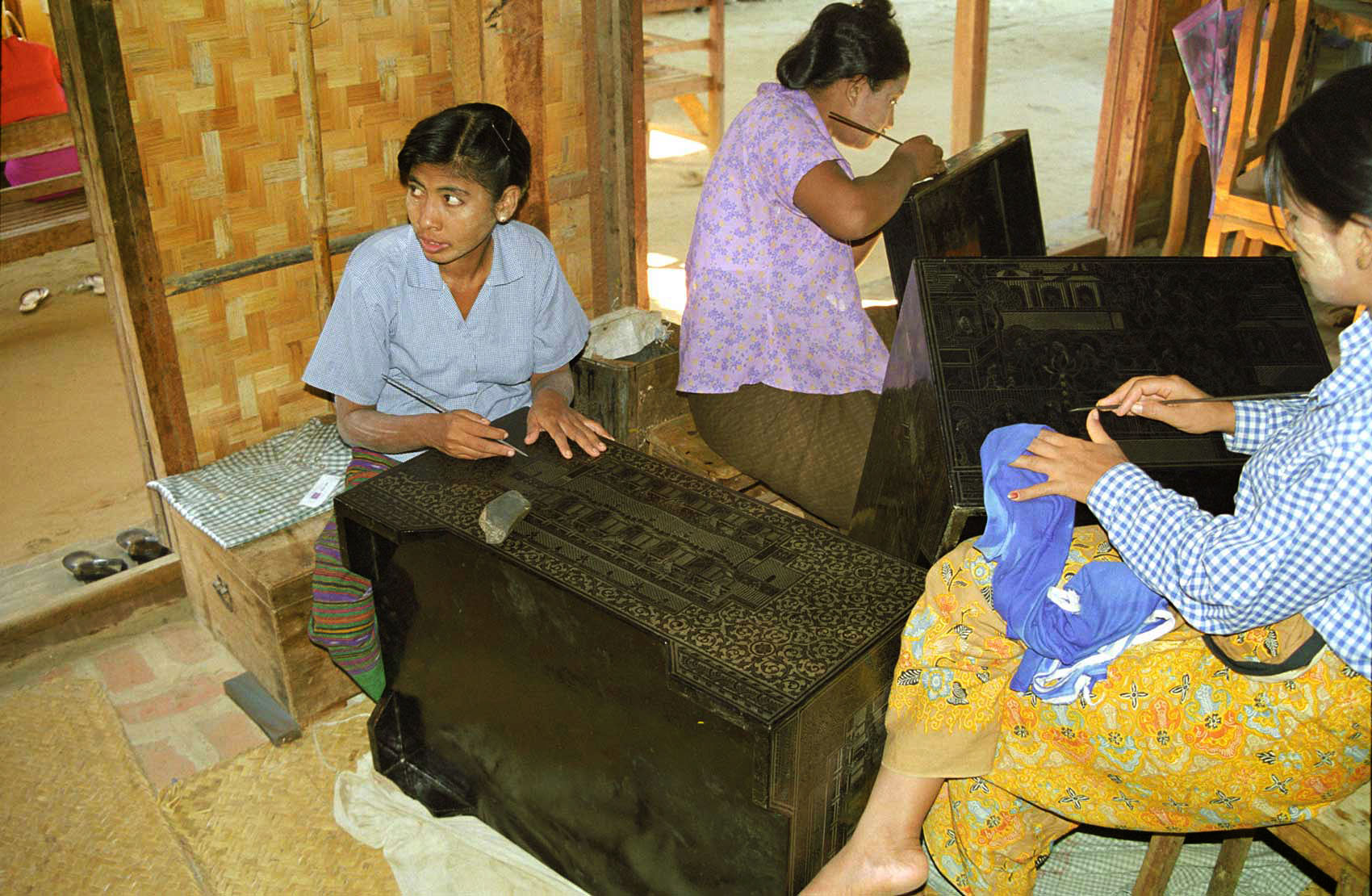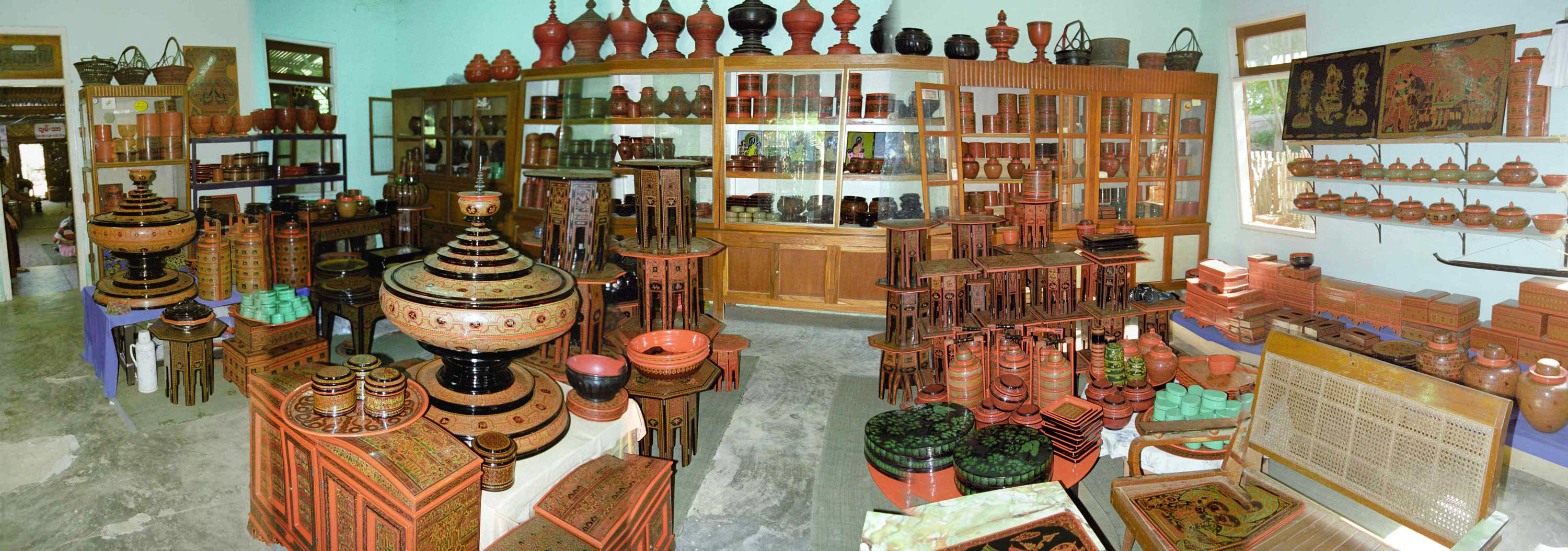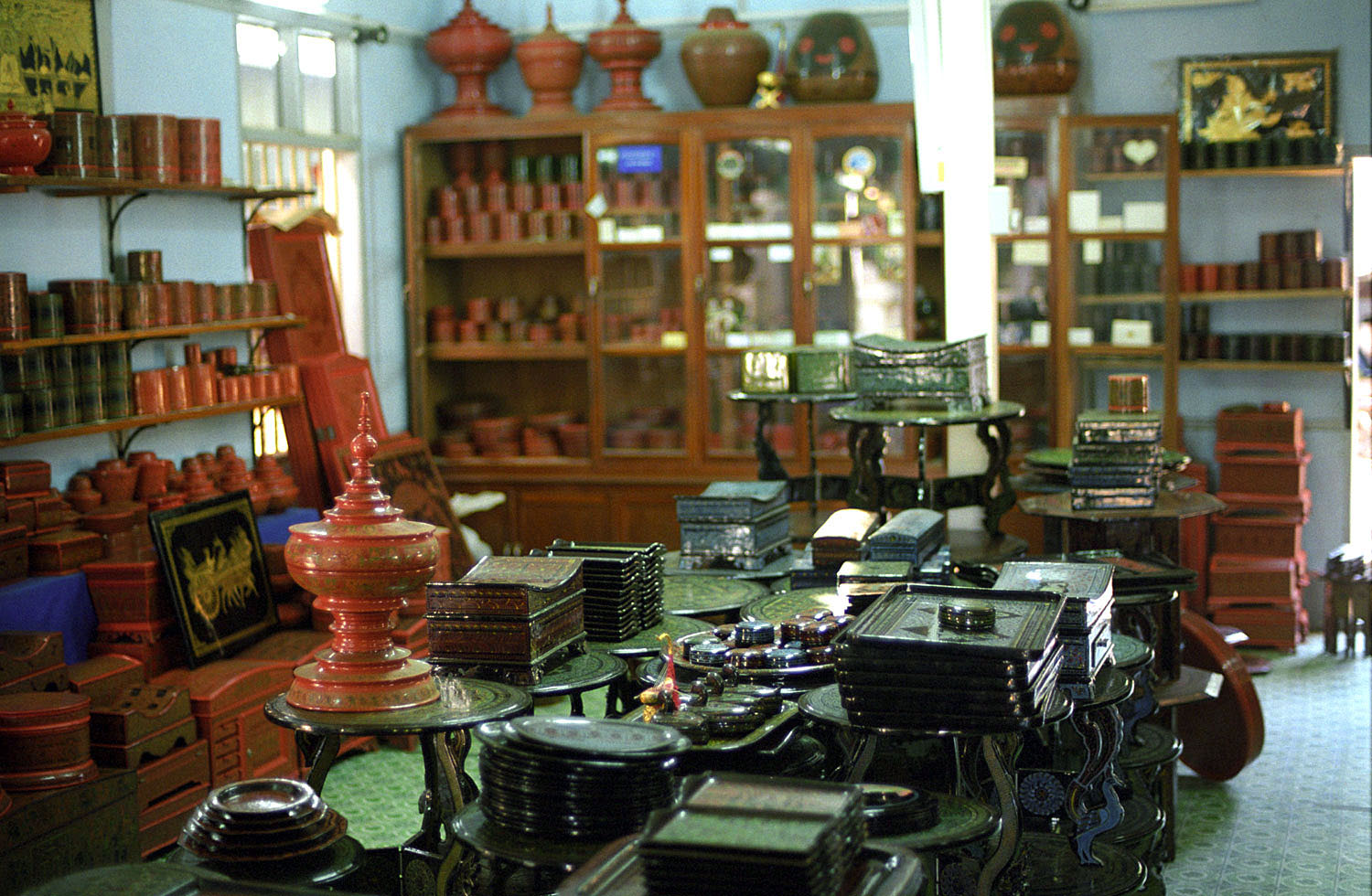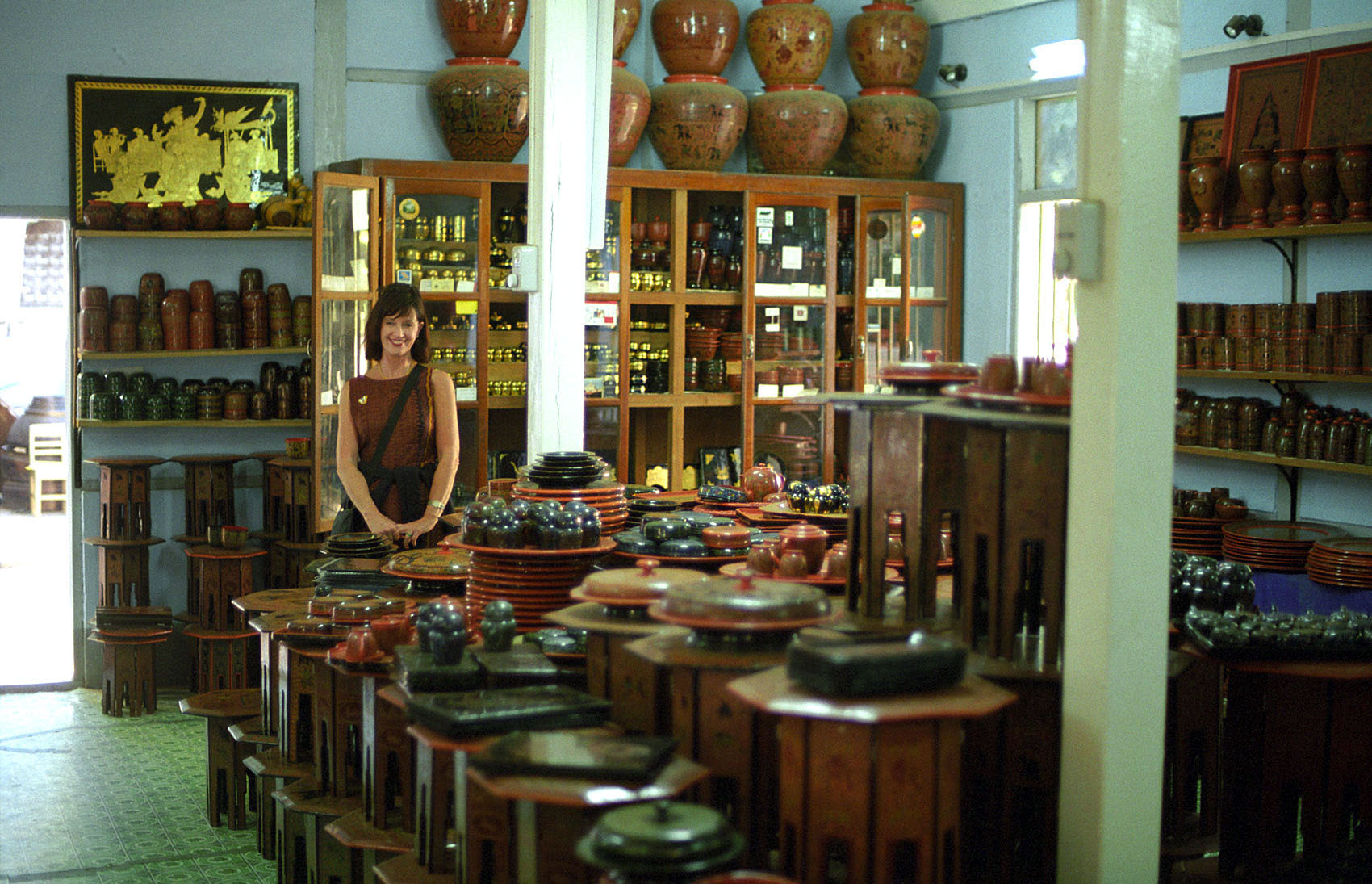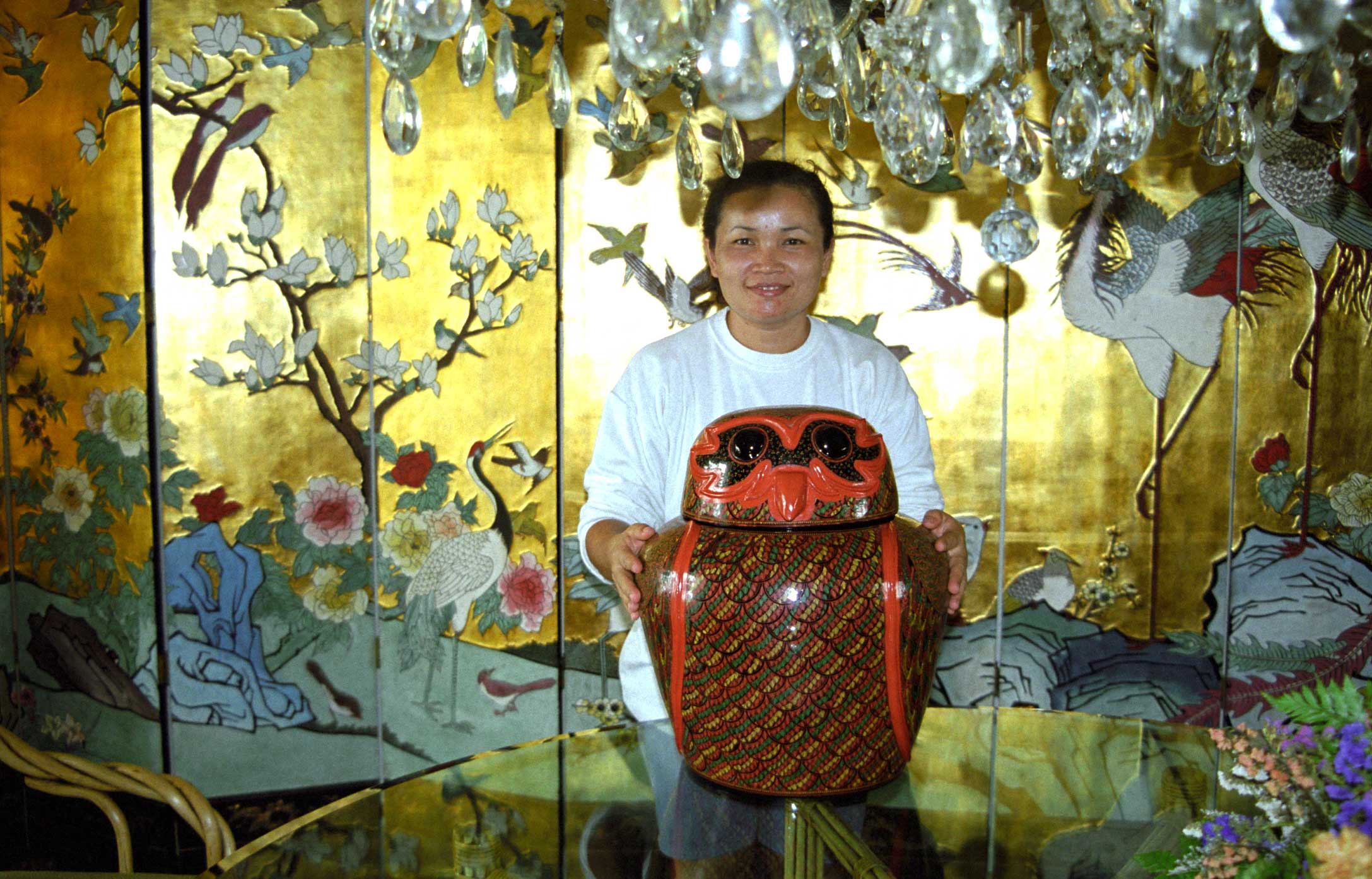The Lacquerware Industry
Burmese lacquerware in a shop in Yangon. Where does it come from and how is it made. Answer: Nearly all of the Burmese laquerware is made in small shops and factories in Bagan, and exported to the world. How is it made? Well, only through painstaking hand labor. In all of our travels we have never seen a more difficult product to produce.
Typical shop/factory in Bagan
Shop offers reed mat on concrete and brick floor as working area. No furniture.
The object to be decorated is first coated in a layer of black sap from the acacia tree. This layer is then etched by hand with designs using a sharp scalpel-like knife. Once the first series of designs are etched, a layer of coloring is applied and dried. Once dry, the outer layer of color is washed away, leaving a colored imprint where the etched designs were made. This process is repeated again for as many times as needed for each color. Some intricate designs require repeat of the same colors.
The work is extremely intricate. Some of the more elaborate pieces take many months to complete.
Building the object to lacquer is also a very arduous process. Many items such as vases, bowls, urns, and cups are made from strips of bamboo coiled into shape. Sometimes these bamboo strips are woven with horsehair like the one Faye is holding. Once shaped as desired, the object is covered with thick coats of lacquer, each taking three to seven days to dry, until it is a hardened shape.
The two women on the right are making the bamboo strip and horsehair objects to later be lacquered.
Some of the finished product is sold in factory showrooms like this and the ones below.
We brought home this neat owl storage urn, shown by Neut in this picture. And lots of other neat lacquerware things.


